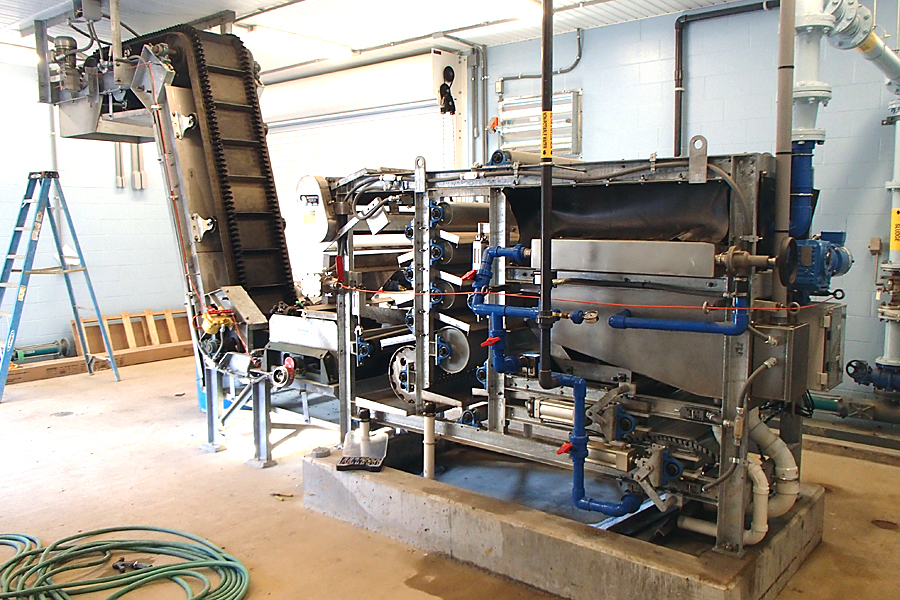Posts in Category: Blogging
How Does a Dewatering Screw Press Machine Work?
Applications of Dewatering Screw Press Machines in Various Industries
Dewatering screw press machines are widely used in various industries for solid-liquid separation. They are designed to remove excess water from materials, such as sludge, wastewater, and industrial effluent, to produce a dry and solid product. In this article, we will explore how a dewatering screw press works, its principle, benefits, and applications in different industries.
How does a dewatering screw press work?
A dewatering screw press machine consists of a screw and a pressing mechanism. The screw is a spiral-shaped component that rotates inside a cylindrical drum. The drum is filled with the material to be dewatered, and the screw presses the material against the inner wall of the drum, creating a pressure that forces the water out of the material. The water is then collected at the bottom of the drum, while the dewatered material is discharged through the top of the machine.

Principle of dewatering screw press machines
The principle of a dewatering screw press machine is based on the concept of pressure and gravity. As the screw rotates, it applies pressure to the material, causing the water to be squeezed out of the material. The gravity then helps to separate the water from the solid particles, allowing the water to flow out of the machine.
Benefits of dewatering screw press machines
Dewatering screw press machines offer several benefits, including:
High efficiency: Dewatering screw press machines are highly efficient in removing water from materials, with a high solid content of up to 80%.
Cost-effective: Dewatering screw press machines are cost-effective compared to other dewatering methods, such as centrifuges and filter presses.
Simple operation: Dewatering screw press machines are easy to operate and maintain, with a simple design that requires minimal labor and maintenance.
Flexible application: Dewatering screw press machines can be used in various industries, including wastewater treatment, mining, and food processing.
Applications of dewatering screw press machines
Dewatering screw press machines have a wide range of applications in various industries, including:
Wastewater treatment: Dewatering screw press machines are used to remove water from wastewater sludge, producing a dry and solid product that can be easily disposed of.
Mining: Dewatering screw press machines are used to remove water from mineral concentrates, such as iron ore and coal, to produce a dry and solid product.
Food processing: Dewatering screw press machines are used to remove water from food waste, such as fruit and vegetable peels, to produce a dry and solid product that can be used as animal feed.
Chemical industry: Dewatering screw press machines are used to remove water from chemical sludge, producing a dry and solid product that can be easily disposed of.

Conclusion
Dewatering screw press machines are an effective and cost-efficient solution for solid-liquid separation in various industries. They offer several benefits, including high efficiency, cost-effectiveness, simple operation, and flexible application. By understanding how a dewatering screw press works and its principle, benefits, and applications, industries can make informed decisions about their use in their respective processes.
How do jordan 1 low team red sneakers address issues of inclusivity and diversity in the fashion industry?
What are the steps in the filter press?
The filter press is a widely used equipment in various industries for solid-liquid separation. The filter press working principle is based on the principle of pressure filtration, where a filter cake is formed on a filter medium, and the liquid is pressed through the cake to separate the solids from the liquids. The steps involved in the filter press process are as follows:
Step 1 – Preparation of the Filter Medium
The first step in the filter press process is the preparation of the filter medium. The filter medium is typically a fabric or paper, which is placed in a frame or a plate. The filter medium is then treated with a chemical solution to make it impermeable to the solids in the liquid.
Step 2 – Addition of the Liquid
Once the filter medium is prepared, the liquid to be filtered is added to the filter press. The liquid is poured into the filter press, and the filter medium is immersed in the liquid.
Step 3 – Formation of the Filter Cake
As the liquid flows through the filter medium, the solids in the liquid are separated from the liquid and form a filter cake on the surface of the filter medium. The filter cake is a thin layer of solids that blocks the passage of the liquid through the filter medium.
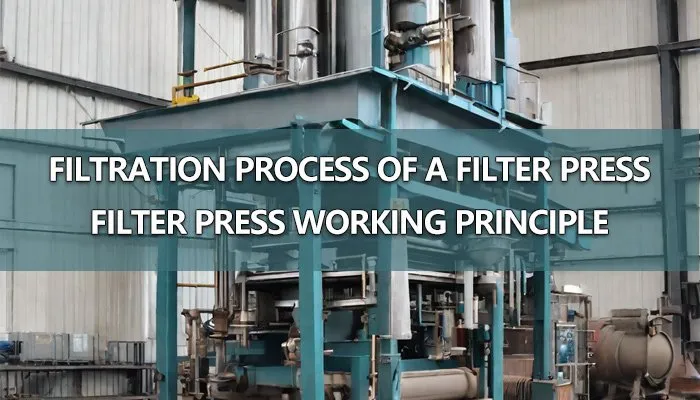
Step 4 – Pressing the Filter Cake
Once the filter cake is formed, the filter press is closed, and pressure is applied to the filter cake to press the liquid through the cake. The pressure is applied through a hydraulic system or a mechanical system, depending on the type of filter press.
Step 5 – Separation of the Solids and Liquids
As the pressure is applied, the liquid is forced through the filter cake, and the solids are separated from the liquid. The liquid that passes through the filter cake is called the filtrate, while the solids that are left behind are called the filter cake.
Step 6 – Removal of the Filter Cake
Once the filtering process is complete, the filter cake is removed from the filter press, and the filter medium is cleaned and prepared for the next use. The filter cake can be further processed or disposed of, depending on its composition and properties.
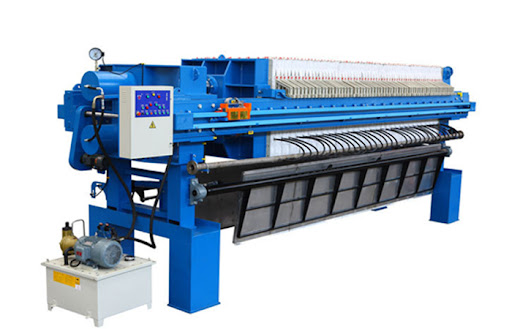
Conclusion
In conclusion, the filter press is a simple and efficient equipment for solid-liquid separation. The working principle of the filter press is based on the principle of pressure filtration, where a filter cake is formed on a filter medium, and the liquid is pressed through the cake to separate the solids from the liquids.
The steps involved in the filter press process include the preparation of the filter medium, addition of the liquid, formation of the filter cake, pressing of the filter cake, separation of the solids and liquids, and removal of the filter cake. The filter press is widely used in various industries, including chemical, pharmaceutical, food and beverage, and wastewater treatment.
How do 4-way black pipe fittings accommodate changes in elevation within a piping system?
4-way black pipe fittings, like other pipe fittings, play a role in accommodating changes in elevation within a piping system. Here’s how they can be utilized for this purpose:
- Vertical Alignment:
- 4-way black pipe fittings can be used to create vertical sections in a piping system, allowing pipes to move up or down as needed to accommodate changes in elevation.
- Connection Points:
- These fittings provide connection points where pipes can be joined in a vertical or angled configuration. By using multiple fittings, the system can navigate changes in elevation smoothly.
- Branching and Diverting:
- 4-way fittings allow for branching and diverting pipes in different directions. This flexibility is useful when the elevation of the piping needs to change, and different routes are required.
- Elbows and Tees:
- Within the 4-way fitting, the presence of elbows and tees enables the creation of angles and turns in the piping system. Elbows facilitate changes in the horizontal plane, while tees allow for branching in the vertical and horizontal directions.
- Adjustable Angles:
- Depending on the design, some 4-way black pipe fittings may allow for adjustable angles. This feature permits the fine-tuning of the angle of the pipes, providing adaptability to changes in elevation.
- Support Structures:
- The fittings contribute to the overall support and stability of the piping system. 4 way black pipe fitting This is particularly important when dealing with changes in elevation, as proper support helps prevent sagging or stress on the pipes.
- Use of Couplings:
- Couplings, combined with 4-way fittings, can be employed to connect pipes seamlessly, allowing for elevation changes without compromising the structural integrity of the system.
- Expansion Joints:
- In situations where the piping system may experience thermal expansion or contraction, expansion joints can be incorporated with 4-way fittings to absorb movement and accommodate changes in elevation.
- Flexible Piping Sections:
- Utilizing flexible pipe sections in conjunction with 4-way black pipe fittings allows for some degree of movement and adjustment, making it easier to navigate changes in elevation.
- Proper Sloping:
- When accommodating changes in elevation, it’s essential to maintain proper sloping in the pipes, especially in drainage systems. 4-way fittings can be positioned to ensure the desired slope for efficient flow.
- Anti-Siphon Features:
- In applications where avoiding backflow is critical, 4-way fittings with anti-siphon features can be employed to prevent water from flowing in the wrong direction due to changes in elevation.
- Sealing and Leak Prevention:
- Ensuring proper sealing at joints is crucial when dealing with changes in elevation. The 4-way fittings, along with gaskets or sealing materials, contribute to leak prevention and system integrity.
When using 4-way black pipe fittings to accommodate changes in elevation, it’s important to adhere to industry standards, follow manufacturer guidelines, and consider factors such as system pressure, material compatibility, and the specific requirements of the application. Proper planning and installation contribute to the overall efficiency and longevity of the piping system.
What types of testing are typically conducted on 4-way black pipe fittings to ensure quality and reliability?
Various testing procedures are typically conducted on 4-way black pipe fittings to ensure their quality, reliability, and compliance with industry standards. These tests are essential to verify that the fittings can withstand operational conditions, pressures, and potential stresses they may encounter in various applications.
Common types of testing for 4-way black pipe fittings include:
- Visual Inspection:
- A visual inspection is the initial step to identify any visible defects, irregularities, or surface imperfections in the 4-way black pipe fittings. This includes checking for proper finishing, absence of cracks, and overall conformance to specifications.
- Dimensional Inspection:
- Measurements and dimensional checks are performed to ensure that the 4-way black pipe fittings meet the specified dimensions and tolerances. This includes assessing the accuracy of angles, diameters, and thread dimensions.
- Material Composition Analysis:
- Material composition analysis verifies that the materials used in the construction of 4-way black pipe fittings conform to specified standards. This ensures the proper alloy or composition required for strength, corrosion resistance, and other relevant properties.
- Hydrostatic Testing:
- Hydrostatic testing involves pressurizing the 4-way black pipe fittings with water or another suitable fluid to a specified pressure level. This test checks for leaks, assesses the structural integrity under pressure, 4 way metal pipe connector and ensures that the fittings can withstand the intended operational loads.
- Tensile Testing:
- Tensile testing assesses the strength and ductility of the material by subjecting the 4-way black pipe fittings to axial pulling forces. This helps determine the tensile strength, yield strength, and elongation properties of the material.
- Impact Testing:
- Impact testing evaluates the resistance of 4-way black pipe fittings to sudden impacts. This is particularly important in applications where the fittings may be exposed to mechanical shocks or dynamic loading conditions.
- Bend Testing:
- Bend testing assesses the ductility and integrity of the fittings by subjecting them to bending forces. It ensures that the fittings can withstand bending without cracking or failing.
- Flattening Testing:
- Flattening tests involve flattening a section of the 4-way black pipe fittings to check their deformation behavior. This is crucial for applications where the fittings may experience external pressure or compression.
- Thread Inspection:
- Thread inspection ensures that the threads on the 4-way black pipe fittings meet the specified standards. It involves checking thread dimensions, pitch, and taper to ensure compatibility with mating components.
- Corrosion Resistance Testing:
- Corrosion resistance testing evaluates the ability of the 4-way black pipe fittings to resist corrosion in different environmental conditions. This is essential, especially in applications where the fittings may be exposed to corrosive substances.
- Non-Destructive Testing (NDT):
- NDT techniques such as ultrasonic testing, magnetic particle testing, or dye penetrant testing are used to detect internal defects, cracks, or irregularities without causing damage to the fittings.
- Fatigue Testing:
- Fatigue testing involves subjecting the 4-way black pipe fittings to repeated cyclic loading to assess their fatigue resistance. This is particularly relevant in applications where fittings may experience repetitive stress.
- Sealing Performance Testing:
- Sealing performance testing involves assessing the ability of threaded or sealed connections in the 4-way black pipe fittings to prevent leaks under pressure. It ensures the reliability of the fittings in fluid-carrying systems.
- Fire Resistance Testing (if applicable):
- In certain applications, especially those involving fire safety, 4-way black pipe fittings may undergo fire resistance testing to ensure their performance under elevated temperatures.
Manufacturers may conduct a combination of these tests based on industry standards, customer requirements, and the intended application of the 4-way black pipe fittings. Adhering to these testing procedures helps ensure the quality, reliability, and safety of the fittings in various operational conditions.
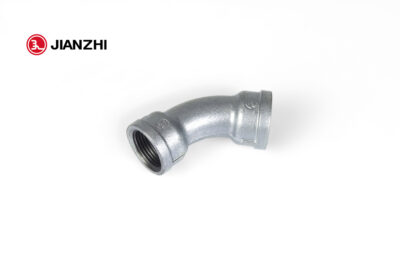
20 Foot 2 Inch Steel Pipe Applications and Benefits
Steel pipes are widely used in various industries for their durability, versatility, and cost-effectiveness. Among the different sizes and thicknesses of steel pipes, 20 foot 2 inch steel pipe stands out for its unique applications and benefits.
In this article, we will explore the uses and advantages of 20 foot 2 inch steel pipe, and why it is an excellent choice for certain industries and projects.
Applications of 20 Foot 2 Inch Steel Pipe
Oil and Gas Industry: 20 foot 2 inch steel pipe is commonly used in the oil and gas industry for transporting crude oil, natural gas, and other petroleum products. Its large diameter and length make it ideal for long-distance pipelines, allowing for efficient and cost-effective transportation.
Water Supply Systems: 20 foot 2 inch steel pipe is also used in water supply systems for municipalities and industrial facilities. Its large diameter allows for high water flow rates, making it suitable for supplying water to large populations and industrial processes.
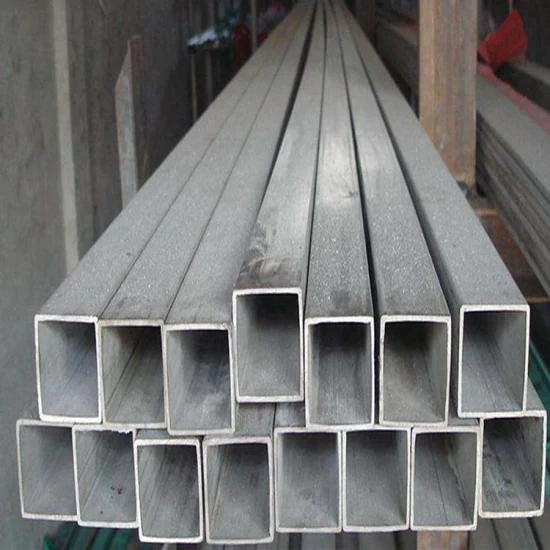
Structural Support: 20 foot 2 inch steel pipe can be used for structural support in large buildings and bridges. Its high strength-to-weight ratio and resistance to corrosion make it an ideal material for supporting heavy loads and withstanding harsh environmental conditions.
Agricultural Irrigation: 20 foot 2 inch steel pipe is used in agricultural irrigation systems for transporting water to fields and crops. Its large diameter allows for efficient water distribution, making it an essential tool for farmers and agricultural producers.
Benefits of 20 Foot 2 Inch Steel Pipe
Durability: 20 foot 2 inch steel pipe is made from high-quality steel that is resistant to corrosion and wear, ensuring a long lifespan and reducing maintenance costs.
Cost-Effectiveness: 20 foot 2 inch steel pipe is a cost-effective solution for various industries, as it can be easily installed and maintained, reducing labor and material costs.
Versatility: 20 foot 2 inch steel pipe can be used in a variety of applications, from oil and gas transportation to water supply systems and structural support.
High Strength-to-Weight Ratio: 20 foot 2 inch steel pipe has a high strength-to-weight ratio, making it strong and lightweight, allowing for easy transportation and installation.
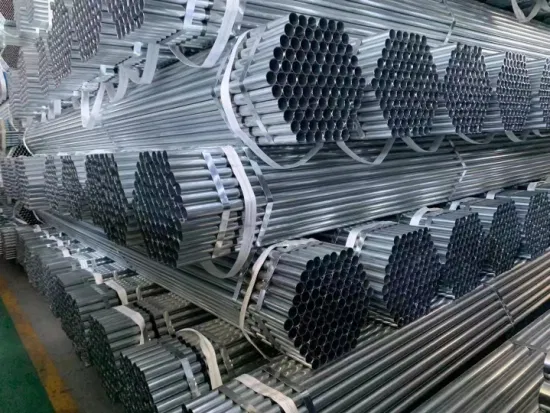
Conclusion
In conclusion, 20 foot 2 inch steel pipe is a versatile and cost-effective solution for various industries, offering numerous benefits and applications. Its durability, high strength-to-weight ratio, and corrosion resistance make it an ideal material for transporting fluids, supporting heavy loads, and withstanding harsh environmental conditions.
Whether you are in the oil and gas industry, water supply systems, structural support, or agricultural irrigation, 20 foot 2 inch steel pipe is an excellent choice for your projects.
Screw Press Dewatering Machine Price
The food industry is constantly evolving, and one of the latest advancements is the use of screw press dewatering machines. In this article, we will explore the benefits of using screw press dewatering machines and how they can improve the quality of food products.
What is a Screw Press Dewatering Machine?
A screw press dewatering machine is a piece of equipment that is specifically designed to remove excess moisture from food products. It works by using a rotating screw to compress the food, causing the moisture to be released and removed from the product. This results in a drier, more stable food product that is easier to store and transport.
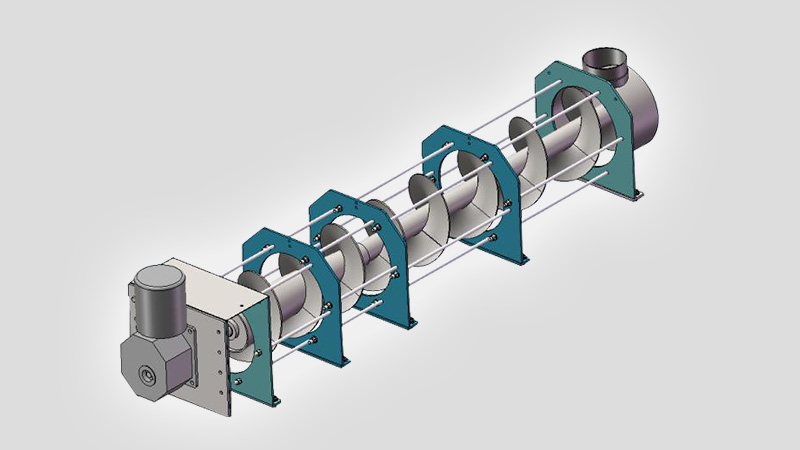
Benefits of Using a Screw Press Dewatering Machine
There are several benefits to using a screw press dewatering machine in the food industry. Some of the most significant advantages include:
Improved Food Safety
One of the most important benefits of using a screw press dewatering machine is improved food safety. By removing excess moisture from food products, these machines help to reduce the risk of contamination and spoilage. This is especially important for food products that are sensitive to moisture, such as meat and dairy products.
Increased Storage Life
Another benefit of using a screw press dewatering machine is increased storage life. By removing excess moisture from food products, these machines help to prolong the shelf life of the product. This is especially important for food products that are perishable, such as fruit and vegetables.
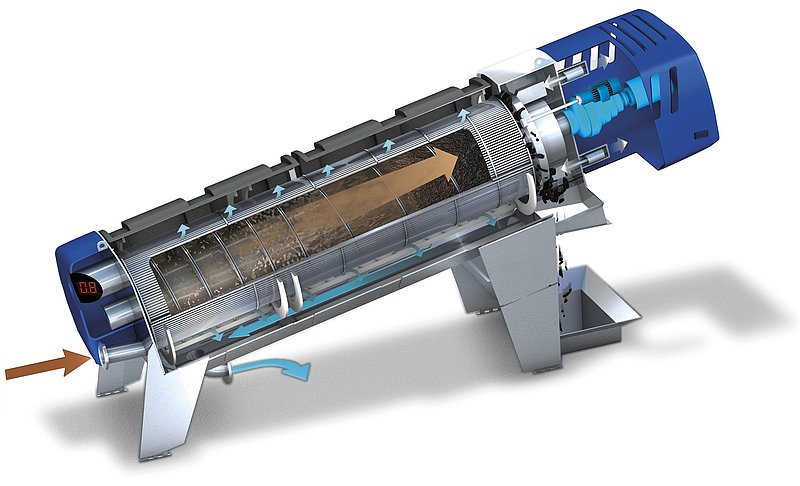
Improved Texture
Using a screw press dewatering machine can also improve the texture of food products. By removing excess moisture, these machines help to create a crispier, more stable texture that is easier to chew and digest. This is especially important for food products that are meant to be consumed in a specific way, such as crackers and bread.
Cost Savings
Finally, using a screw press dewatering machine can also save money in the long run. By removing excess moisture from food products, these machines help to reduce the amount of waste that is generated. This can help to reduce costs associated with packaging and transportation.
Conclusion
In conclusion, screw press dewatering machines are a valuable tool in the food industry. By removing excess moisture from food products, these machines help to improve food safety, increase storage life, improve texture, and save money. If you are looking for a way to improve the quality of your food products, consider investing in a screw press dewatering machine today.
How does a wet towel machine manage the dispensing of a specific number of towels?
The management of dispensing a specific number of towels in a wet towel machine typically involves the integration of various technologies and features to ensure accurate and controlled towel distribution.
Here are common methods used to manage the dispensing of a specific number of towels:
- Electronic Counting System: Many wet towel machines utilize an electronic counting system to keep track of the number of towels dispensed. This system can use sensors or other detection mechanisms to register each dispensed towel and update the count accordingly.
- Programmable Settings: Users can often program the wet towel machine to dispense a predetermined number of towels per cycle. This can be done through the machine’s control panel or interface, allowing users to customize the dispensing quantity based on their preferences or specific requirements.
- Microcontroller or Processor: Wet towel machines may incorporate a microcontroller or processor that manages the overall operation of the machine. This component can play a crucial role in accurately controlling the dispensing process, including ensuring the correct number of towels is dispensed.
- User Input and Selection: Some machines provide users with the option to manually input the desired number of towels before starting the dispensing process. This user input is then used by the machine’s internal system to control the dispensing mechanism accordingly.
- Batch Dispensing: In addition to single towel dispensing, certain wet towel machines offer batch dispensing features. Users can specify the number of towels they need, and the machine dispenses them in batches, wet wipe sticker making it convenient for users who require multiple towels at once.
- Display and Feedback: Machines often have a display panel or indicator lights that show the remaining number of towels available or the progress of the dispensing cycle. This provides users with real-time feedback on the status of towel dispensing.
- Automatic Shut-Off: Once the preset number of towels has been dispensed, some machines have an automatic shut-off feature to stop the dispensing process. This helps prevent overuse of towels and ensures that the specified quantity is maintained.
- Smart Features: In advanced wet towel machines, smart features may be integrated, allowing users to control and monitor towel dispensing remotely through mobile apps or other smart interfaces. This can include setting specific counts and receiving notifications.
It’s important for users to refer to the user manual or guidelines provided by the manufacturer to understand the specific features and functionalities related to towel dispensing on a particular wet towel machine. This ensures proper usage and maximizes the effectiveness of the towel dispensing system.
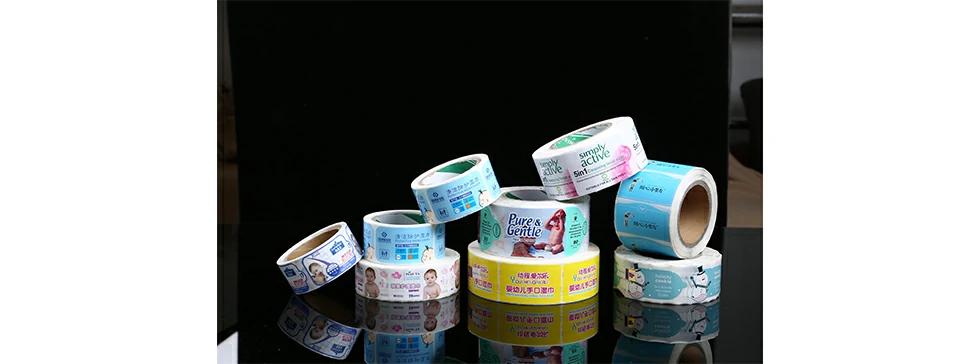
How does a wet towel machine address issues of towel jamming or malfunction?
The specific mechanisms to address towel jamming or malfunctions in wet towel machines may vary depending on the design and features of the machine.
However, here are some common methods and features that are often employed to address such issues:
- Sensors and Detection Systems: Many wet towel machines are equipped with sensors that can detect abnormalities in the towel dispensing process. If the sensors identify a jam or malfunction, the machine may automatically pause or initiate corrective actions.
- Anti-Jamming Mechanisms: Some machines incorporate anti-jamming features in their dispensing mechanisms. This can include mechanisms that prevent multiple towels from being dispensed simultaneously or features that detect irregularities in towel movement.
- Automated Resetting: In the event of a jam or malfunction, some wet towel machines have an automated resetting process. This may involve temporarily stopping the operation, clearing the jam, and then resuming normal functionality.
- User Alerts and Notifications: Machines may be programmed to display error messages or alerts on the control panel, indicating the nature of the issue. This helps users identify and address problems promptly.
- Manual Override: In cases where automated measures are not sufficient, users may have the option to manually override the machine. This could involve accessing a manual release mechanism or following specific steps outlined in the machine’s user manual.
- Regular Maintenance Requirements: To prevent potential issues, wet towel machine production line wet towel machines often come with recommended maintenance schedules. Regular cleaning, lubrication, and inspection can help minimize the likelihood of jams or malfunctions.
- Quality Construction: High-quality materials and construction can contribute to the overall reliability of the machine. Robust and durable components are less likely to malfunction or cause jams during regular operation.
- Customer Support and Service: Manufacturers may provide customer support services, including troubleshooting guides and assistance. In cases of persistent issues, users may be able to contact customer support for further guidance or arrange for professional servicing.
It’s important to note that the specific features and mechanisms to address towel jamming or malfunctions can vary between different models and brands of wet towel machines. Users should refer to the manufacturer’s instructions and guidelines for proper usage, maintenance, and troubleshooting.
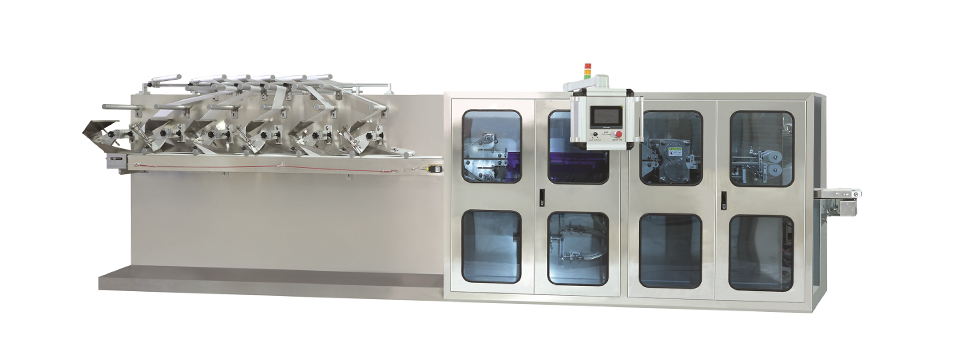
Different Types of Filter Press
Filter presses are an essential tool in various industries, including chemical processing, food and beverage, pharmaceuticals, and wastewater treatment. In this article, we will explore the different types of filter presses, their features, and their applications.
Types of Filter Press
There are several types of filter presses, each with its unique characteristics and uses. The most common types of filter presses include:
Plate and Frame Filter Press: This is the most common type of filter press, consisting of a series of plates and frames that separate solids from liquids.
The plates are made of metal or polypropylene, and the frames are made of metal or plastic. This type of filter press is used in various industries, including chemical processing, food and beverage, and wastewater treatment.
Membrane Filter Press: This type of filter press uses a thin, flexible membrane instead of plates and frames. The membrane is made of polypropylene or polyester, and it is designed to filter out finer particles than plate and frame filter presses.
Membrane filter presses are commonly used in applications where high purity is required, such as in the production of pharmaceuticals.
Cartridge Filter Press: This type of filter press uses a cartridge-type filter element, which is made of pleated paper or synthetic material.
The cartridge is designed to filter out particles and impurities from the liquid, and it can be easily replaced when it becomes clogged. Cartridge filter presses are commonly used in applications where space is limited, such as in laboratories or pilot plants.
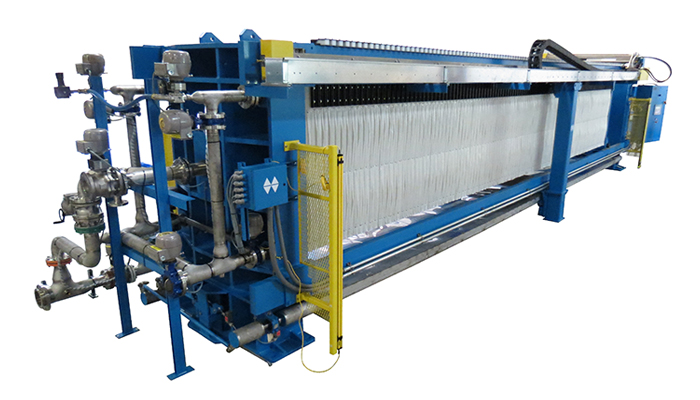
Candle Filter Press: This type of filter press uses a cylindrical filter element, which is made of pleated paper or synthetic material.
The candle filter press is designed to filter out particles and impurities from the liquid, and it can be used in various industries, including chemical processing, food and beverage, and wastewater treatment.
Automatic Filter Press: This type of filter press is equipped with automated controls and systems, which allow for continuous operation and minimal maintenance.
Automatic filter presses are commonly used in large-scale industrial applications where high productivity and low maintenance are required.
Applications of Filter Presses
Filter presses have a wide range of applications in various industries, including:
Chemical Processing: Filter presses are used to separate solids and liquids in chemical processing applications, such as in the production of chemicals, pharmaceuticals, and fuels.
Food and Beverage: Filter presses are used to filter out impurities and contaminants from food and beverage products, such as fruit juice, wine, and dairy products.
Pharmaceuticals: Filter presses are used to filter out impurities and contaminants from pharmaceutical products, such as medicines and vaccines.
Wastewater Treatment: Filter presses are used to separate solids and liquids in wastewater treatment applications, such as in the treatment of industrial wastewater and domestic wastewater.
Benefits of Filter Presses
Filter presses offer several benefits, including:
High Filtration Efficiency: Filter presses can filter out particles and impurities with high efficiency, resulting in a high-quality product.
Low Maintenance: Filter presses are designed to be easy to maintain, with few moving parts and a simple design.
Continuous Operation: Filter presses can operate continuously, allowing for high productivity and minimal downtime.
Versatility: Filter presses can be used in a wide range of applications, making them a versatile tool in various industries.
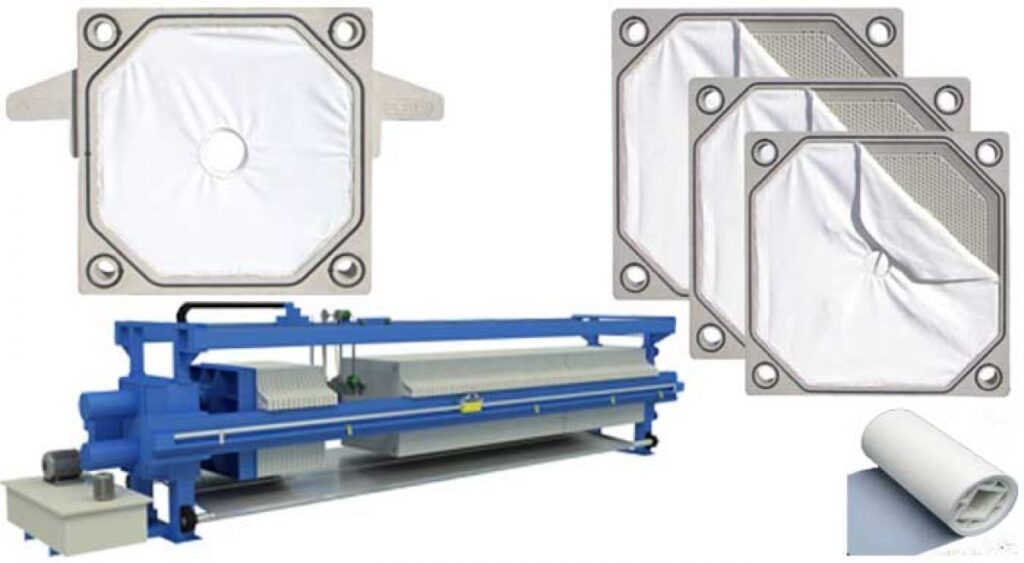
Conclusion
Filter presses are an essential tool in various industries, offering high filtration efficiency, low maintenance, continuous operation, and versatility. There are several types of filter presses, each with its unique characteristics and uses.
By understanding the different types of filter presses and their applications, industries can make informed decisions about which filter press is best for their needs.
Whether it’s a plate and frame filter press, membrane filter press, cartridge filter press, candle filter press, or automatic filter press, there is a filter press that can meet the specific requirements of any industry.
Filter Press Manufacturers in USA
If you’re looking for filter press manufacturers in the USA, you’ve come to the right place. In this article, we’ll provide you with a comprehensive guide to the top filter press manufacturers in the country, including their features, benefits, and applications.
Top Filter Press Manufacturers in the USA
When it comes to filter press manufacturers in the USA, several names stand out from the rest. Here are some of the top manufacturers to consider:
Filter Press Manufacturers, Inc. – With over 30 years of experience, Filter Press Manufacturers, Inc. is a leading provider of filter presses for various industries, including chemical, food, and pharmaceutical.
Evoqua Water Technologies – Evoqua Water Technologies is a global leader in water and wastewater treatment solutions, offering a range of filter presses for various applications.
Graver Technologies – Graver Technologies is a trusted name in the filter press industry, offering a wide range of filter presses for chemical, petrochemical, and refining applications.
Aqua-Chem, Inc. – Aqua-Chem, Inc. is a leading provider of water treatment solutions, including filter presses, for various industries, including municipal, industrial, and commercial.
US Filter Press – US Filter Press is a leading manufacturer of filter presses for various industries, including chemical, food, and pharmaceutical.

Features and Benefits of Filter Presses
Filter presses are designed to separate solids from liquids, and they offer several benefits, including:
High efficiency – Filter presses are highly efficient, with some models capable of filtering up to 99% of particles.
Cost-effective – Filter presses are cost-effective, as they reduce the need for chemicals and energy required for treatment.
Versatility – Filter presses can be used in various industries, including chemical, food, and pharmaceutical.
Easy maintenance – Filter presses are easy to maintain, with simple and quick-to-replace parts.
Applications of Filter Presses
Filter presses have a wide range of applications, including:
Chemical processing – Filter presses are used to separate solids and liquids in chemical processing, such as in the production of chemicals, pharmaceuticals, and fuels.
Food and beverage – Filter presses are used in the food and beverage industry to separate solids from liquids, such as in the production of fruit juice, wine, and dairy products.
Pharmaceuticals – Filter presses are used in the pharmaceutical industry to separate solids from liquids, such as in the production of medicines and vaccines.
Water treatment – Filter presses are used in water treatment plants to separate solids from liquids, such as in the removal of suspended solids, bacteria, and viruses.
